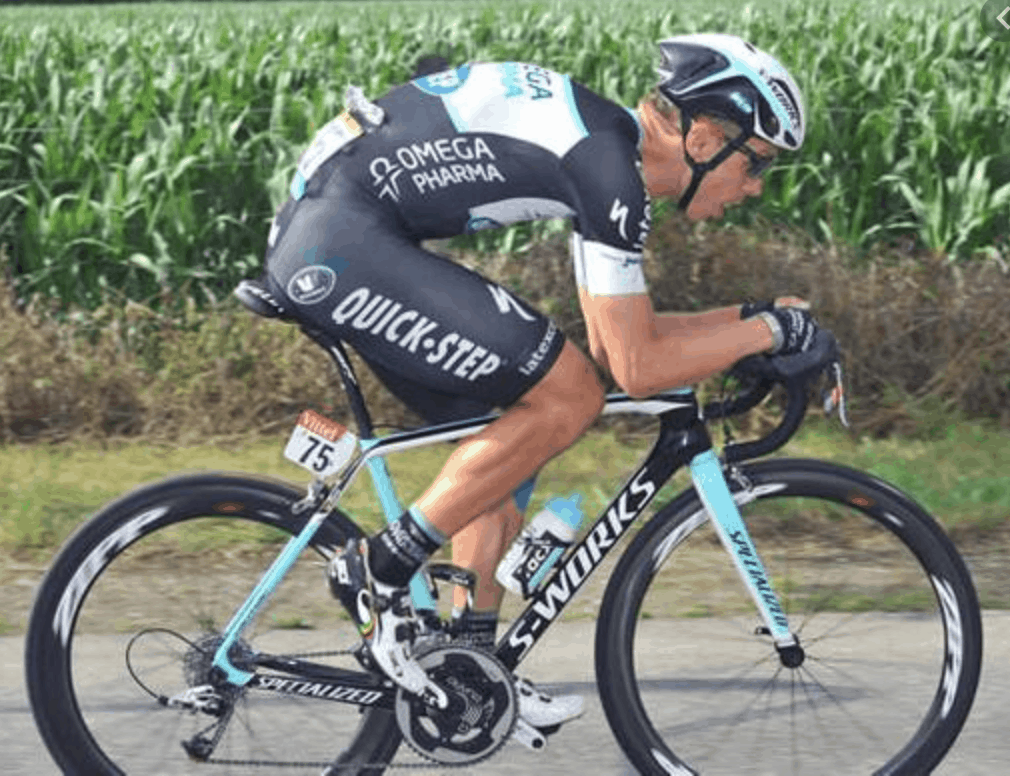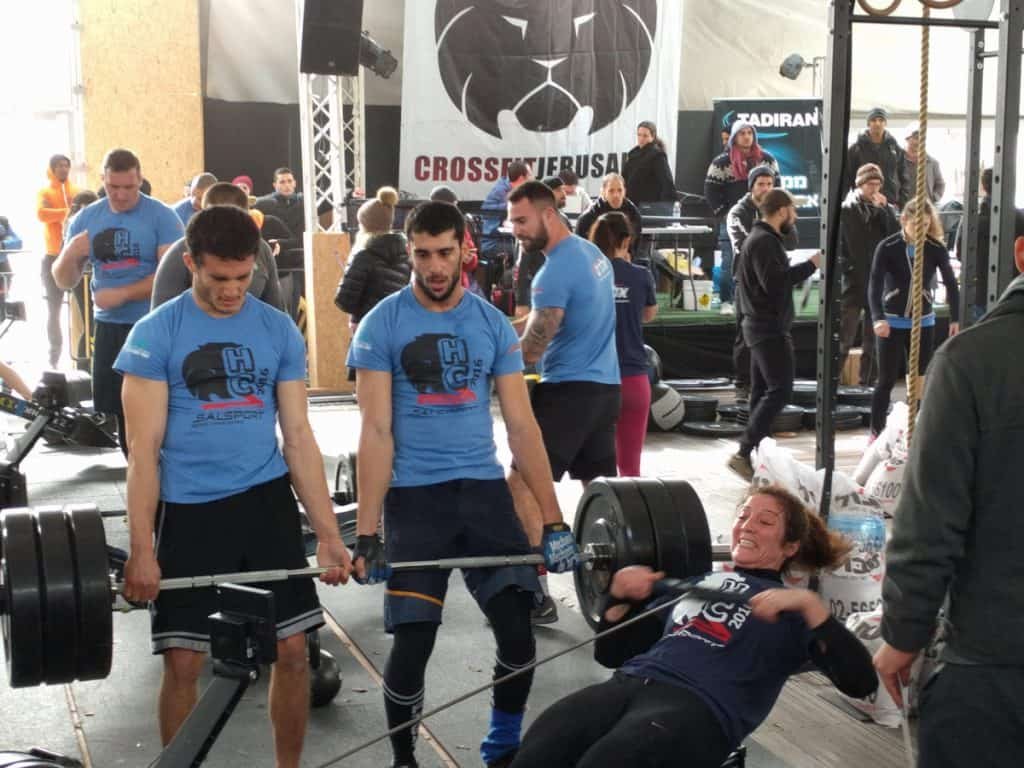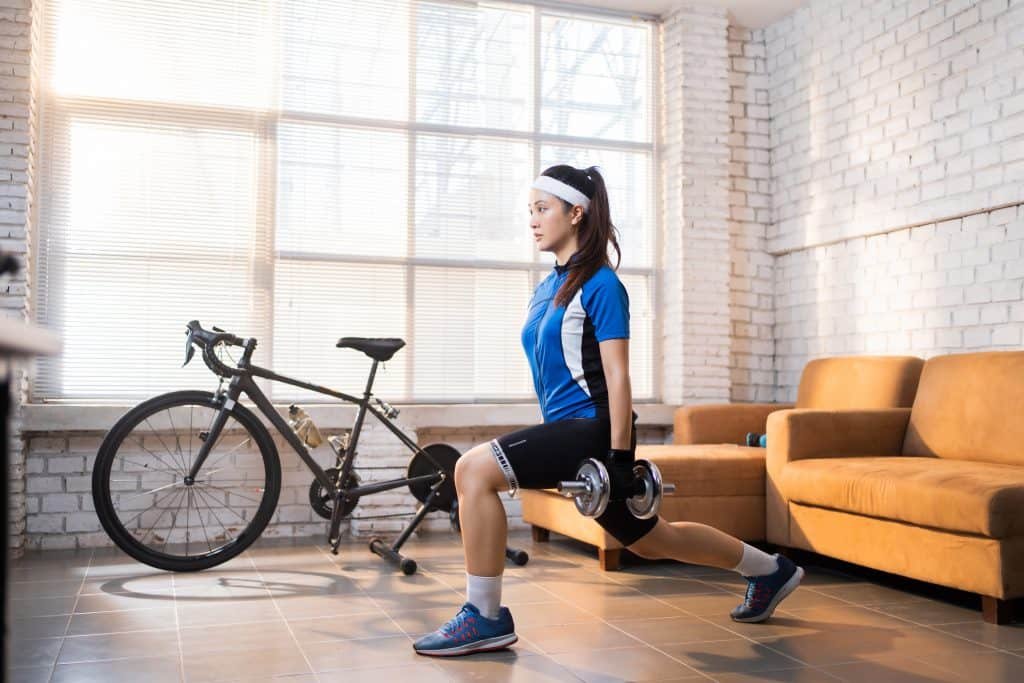Does Strength Training Help Cycling?
With many cyclists now hitting the weights we have to ask: Does strength training help cycling?Yes, but there are a few important things you need to know.
No matter whether you call it strength training, weight training, or weight lifting, using weights and resistance exercises to improve your riding has become rather widely accepted by cyclists of all ages & levels from around the globe.
Cyclists of all abilities and experience levels can reap massive benefits from strength training, but simply hitting the weights to “pick things up & put them down” or copying “cycling specific moves” is not going to get you the results you want or need.
But how exactly does strength training help cycling?
We take a look at why your strength training may not be helping your cycling as much as you think it is, and how you can fix it, with just a few simple tweaks.
What makes strength training for cyclists so vital?
Many riders and coaches are quick to point to strength training preventing muscle imbalances and reducing risk of injury. While this CAN be true, many cyclists and coaches alike make the mistake of focusing too much on the movements and muscles that have already become very strong due to their use in riding, or that have adapted to poor positions due to the long hours in the saddle/ sport demands.
It is certainly important for us to work on moves like squats, lunges, front planks, and leg presses, as they absolutely have their place in an intelligently designed strength training program for cyclists… But they shouldn’t be the main focus.
In fact, when we are looking to build a strength training program for a road cyclists or mountain biker, or any athlete at all, there are two basic considerations that we must first make:
- What movements and positions are they getting in their sport?
- How is your off-bike posture?
These 2 questions will be significant drivers behind the individuals strength training programming exercise selection, as well as help us to determine what kinds of overuse or muscular imbalance injuries the rider may be at risk for. These considerations are exactly the same for triathletes as well.


You can use strength training to help cycling performance, but decreasing risk of injury is not a given!
Decreasing risk of injury
Our sport of cycling is one that requires us to get really good at a highly repetitive movement, where we are in very specific positions, with little variability. This leaves our bodies adapting to these demands, resulting in some muscles shortening, others lengthening, as well as connective tissues being stretched or in a position where they are unable to perform their job.
An intelligently designed strength training program for cyclists will help you build better balance of muscles strength at the many joints in the body, allowing you to build stronger, yet more flexible and resilient, muscles.
But it’s improtant to understand that decreasing your risk of injury from long-term (negative) posture changes and big strength imbalances will ONLY be a result from strength training, if you work to gain better balance of strength at each joint, as well as doing work in the gym which is different than what you already get hours of on the bike.
This means that taking the time to build quality movement patterns and technique for each of the FUNdamental 5+1 human movements (Push, Pull, Squat, Hinge, Press, Rotary Stability) is going to form the foundation of your program. Close behind, if working on the movements and postions that you are NOT good at. For many cyclists these movements include, but are not limited to:
- Hinging (Deadlifts, Kettlebell Swings)
- Learning how to brace your midsection to resist twisting
- Learning how to use your glutes
- Working on Thoracic extension (ability to lift chest up/ arch back from your upper back)
- Working to get better shoulder blade positioning and movements from the shoulder
- Learning how to breathe
Just to name a few.

Doing strength training does not automatically help cycling performance by preventing muscular imbalances
In order for us to perform at our best- to produce the highest amount of power for the longest period of time- our body needs to have the ability to create enough force and tension from the different moving parts. But if some muscles are tighter or stronger than those they are designed to work together with, your performance will suffer.
Just heading into the gym or picking up some weights and “doing strength training” will NOT help your cycling performance. In fact, the very exercises that many cyclists may choose to do may lead to a decrease in performance, as the movements will create even more muscular imbalances.
These common movements are:
- Squats
- Lunges
- Leg Press
- Hamstring Curls
- Front Planks
Sure, these movements look a lot like cycling, but that’s exactly the challenge: You’re not improving your bodies ability to work together in proper balance, to produce maximal power, for longer periods of time, down to the pedals.
Instead, what we want to work on is improving your ability to fire and strengthen muscles that are often either neglected while riding, or not put through their full range of motion.
Working to prevent muscular imbalances will mean doing exercises that you don’t necessarily like or feel that will boost your performance outright, and need to focus on technique and even using light or no weight for some exercises. Examples of common exercises that many cyclists need in order to help prevent muscular imbalances includes:
Learning how to activate and fire your glutes- Prone Glute Extension
Learning how to lock your rib cage and hips together
Learning how to side plank in order to buidl full core strength
Opening your ribcage, chest, and shoulders
Many of you will read the above, or watch the videos, and be shaking your head in agreement. You already know these areas are important, and can see their value.
But what about the importance of upper body strength?
Learning how to fire your mid-back muscles
Yes, each of these is incredibly important to your on-bike performance! No, we don’t want or need to add lots of strength or muscle, but we DO need the upper body to have decent strength, and great movement patterns, in order to help you perform better on the bike.
When you climb, sprint, or steer your bike, you are using your upper body. The cleaner the movement patterns, and the stronger they are, the better you will perform. Of course, there are caveats here, but as a general rule, cyclists lack the upper body strength they need to perform at their best.
Improved Cycling Performance
This may seem like a “well, duh” item, as many believe that the stronger you are the better you will perform, but this is not granted!
In fact, there are a number of different kinds of strength, and you can absolutely build the wrong kind of strength for your sport. These different kinds of strength are beyond this post, but if you’d like to learn more about this, you can pick up my first book The Vortex Method, which is the most comprehensive resource on strength training for cyclists available.
But for now, let’s focus on the POTENTIAL for cycling performance from strength training
Many riders mistakenly believe that just by doing some strength exercises, they’re entitled to performance gains. But this is not necessarily the case!
HOW you perform an exercise, is just as, and perhaps even more important than WHAT you do.
Sure, you could point to the fact that a stronger muscle means that you’ll be using less of the total strength in order to perform a movement….but remember that there are different kinds of strength, and making gains in the wrong kind of strength can oftentimes stunt the growth of your in-sport abilities.
Let’s take an excerpt from one of the more widely cited studies on the matter:
https://www.ncbi.nlm.nih.gov/pubmed/23914932
Combining endurance training with either explosive or heavy strength training can improve running performance, while there is most compelling evidence of an additive effect on cycling performance when heavy strength training is used.

What is it about heavy or explosive strength training and positive effects on cycling?
It’s the coordination of the many muscles of the body to produce a singular movement, and the ability of the body to produce stiffness at the spine, rib cage, and pelvis, in order to move the weight in an explosive manner, or to move a heavy object.
In other words:
The benefits of strength training come from challenging the body (and learning the proper ways) to produce proximal stiffness (locking together the hips, spine, & rib cage).
But if we look at how many people, especially cyclists lift moderate to heavy weights, we see that the SKILL of abdominal bracing and core stiffness is missing. I spoke about this in some depth in my previous post “Planking, You’re Doing it Wrong!”,and how mainstream endurance athletes have been given this false sense of a “strong core” from the magic pill of an exercise of Front Planks.
Improving your cycling performance with strength training comes from mastering the correct postures, getting the movements from the correct places, and taking the time to rewire poor movement patterns. But this can take time, and can put you even more into a feeling of being lost in the weight room, and even more downright self-conscious as you hit the gym.
However, just as the greats in any sport, those who don’t care what others think, and take the time to truly master the fundamentals, reap massive benefits down the road.
But don’t take my word for it, Here’s one of the current riders I am working with on a personalized home strength workout program. This is what he had to say after just 2 weeks of at-home workouts done with a 25# and 35# kettlebell, an adjustable bench, and a few dumbbells.

This rider is in his mid-50’s and has begun to match his old PR’s on the bike….and to SMASH a few old Personal Records he thought he would not see again.
He’s not alone!
In fact, most of the riders I work with individually are in their mid-50’s, and were looking to fend off the muscle mass loss, and poor postures that they see their riding friends undergo.
Nearly every rider says “If I can just maintain my on-bike abilities, or slow down the decrease, I’ll be happy”….only in a few months to find themselves coming close to old PR’s from their last 5-10 years of riding!
Why do some cycling coaches think strength training decreases performance?

There are still a number of riders and coaches who do not believe that strength training can improve cycling performance.
They are not necessarily wrong!
I’ve seen it myself, and it is in fact incredibly disappointing to see someone put time and effort into strength training, only to see their on-bike performance drop significantly.
It happens all too often, due to lack of understanding of how strength training needs to be utilized to increase on-bike performance.
With all the myths and misinformation out there on the internet about general fitness and health, it’s no surprise. These coaches and athletes hear that strength training is good for cycling, so they head to their local gym, and pick up some strength training programs from a fitness magazine or blog.
- 3 sets of 10-15
- Add 2.5- 5 pounds (1-2kg) each week to the bar until you cannot do more than 3 repetitions on a set
- Go to repetition maximum (failure) each time you hit the gym
- Only do strength training in the fall/winter
Are among some of the most common thoughts on strength training for cyclists…..however these approaches will often lead either to unnecessary weight gain (3 sets of 10-15 is a bodybuilder style workout), injury ( doing repetition maximums places a lot of demand onto the tissues of the body that your sport of cycling has not prepared you for), or a loss of any strength & performance gains (just like your riding fitness will fall if you stop riding, so to with strength).
So what do you do?

Much like your on-bike training, your cycling strength program should change throughout they year, to help you gain different adaptations and strength throughout the year.
This is called periodization.
I spoke about this in a previous post HERE.
In short, your strength training year is going to change and go through different phases. Some phases you will in fact be doing sets of 10-15 repetitions, but only for enough time to get the tissues ready for the next phase, where you’ll be doing sets of 4-8 repetitions….and the cycles continues throughout the training year.
This allows you to not only build strength, but also to better use your energy, and allow you to see improvements in your riding year-round, just as the rider mentioned above in his mind-50’s is seeing.
Over the last decade, I have made a number of resources to help you make sense of all the information out there, in order to be able to build yourself a strength training program FOR CYCLING results.
These resources include those that are free:
The Human Vortex Training YouTube Channel
Where you can find Strength Training Exercises and Technique for cyclists and triathletes:
https://www.youtube.com/HVTraining
The Strong Savvy Cyclist and Triathlete Podcast
Where I interview professionals in the endurance sports and strength training world:
The numerous blog posts I write for TrainingPeaks.com
My monthly column for PezCyclingNews.com
If you want to dive deeper into Strength Training for Cycling, pick up a copy of my First Book, The Vortex Method: The New Rules for Ultimate Strength & Performance In Cycling. It is the most comprehensive and powerful book written to date on strength training for cycling, and includes 3 full-year strength training programs that you can use.
1 gym based program
2 home programs
Don’t worry, the book also includes access to the special page here on the HVT website where you can watch demonstration videos for every exercise in the training plans.
Until next time, remember to train smarter, not harder, because it IS all about you!








2 thoughts on “Does Strength Training Help Cycling?”
HI, I recently incorporated weight training in my cycling training, starting at the end of January until first week of March. But I’ve noticed I am not riding as fast as I used to and was told my style of weight training was making me slower. I was doing about 4 sets of 10 reps of squats, 15 reps of leg curls and extensions. How to I transition from this because I had a great base training session of about 15-20 hours but feel like that has all be ruined given the weight training. I’ve gained a lot of leg mass and weight as well. Should I just ignore that and continue with starting intervals as I initially planned? Thanks
Daniel, this is a common problem that many cyclists (and triathletes) face, as they hit the gym and “lift heavy stuff!”….only to find little, if any, gains on the bike/run/swim.
The answer is detailed, much more so than I can cover in a single written response. So I’ll make my next solo podcast episode on this topic and help you understand the entire story.
To get you started in the right direction, yes, start your interval training.
Change over your strength training to IMPULSE training, as described in one of my recent YouTube videos https://youtu.be/sUK5BaE7pHE
Don’t go crazy, and let QUALITY guide you.
This will help you get started.
Hope this helps!